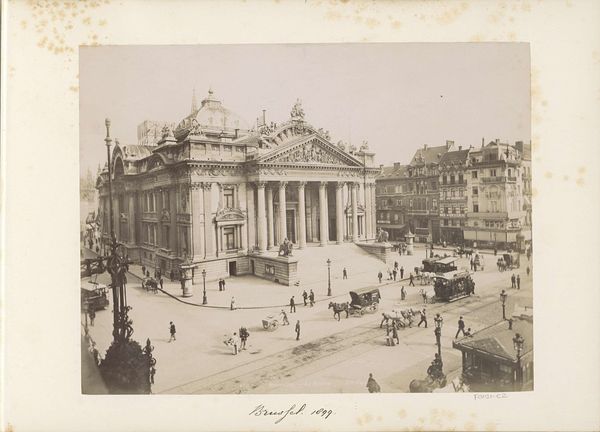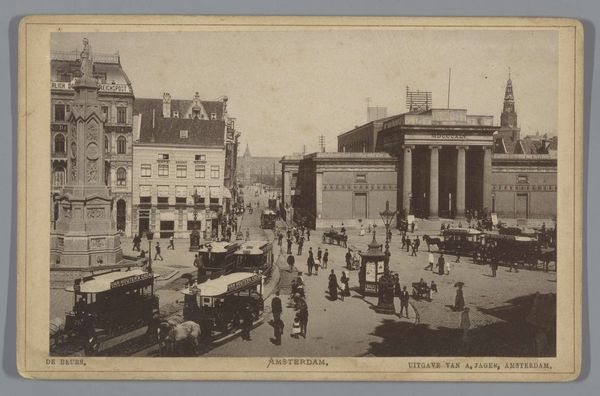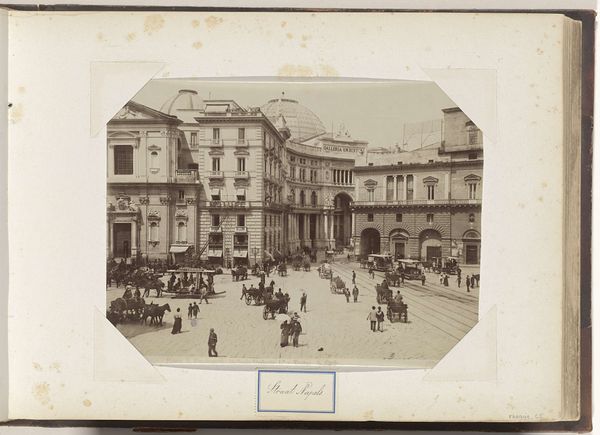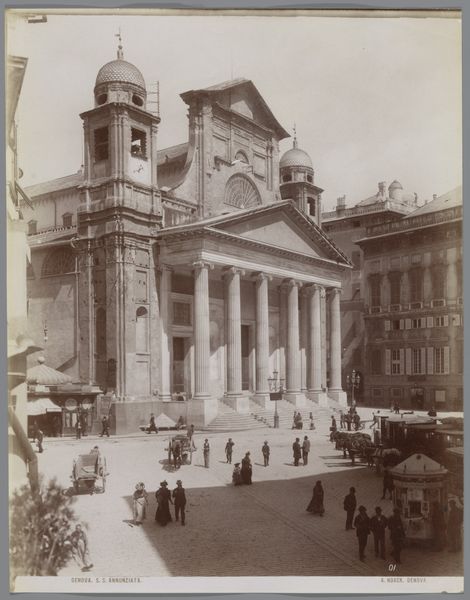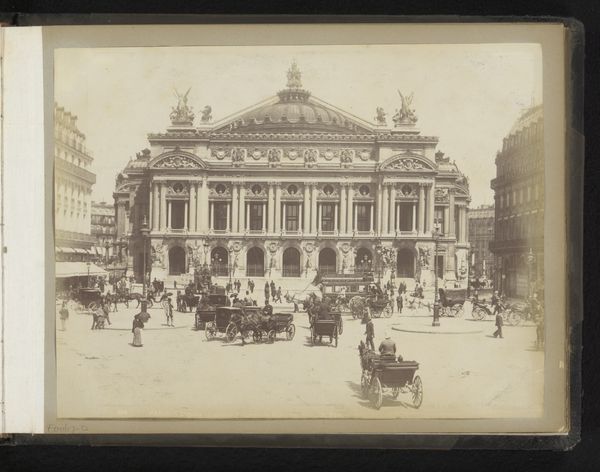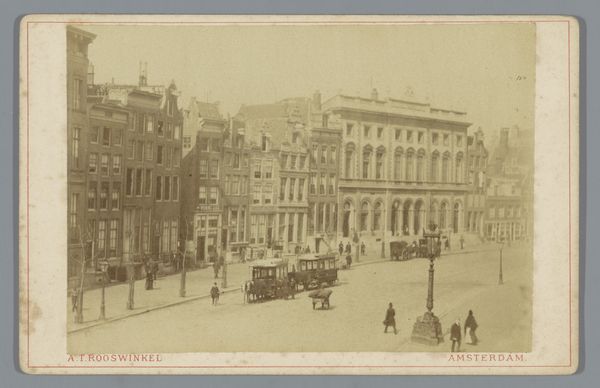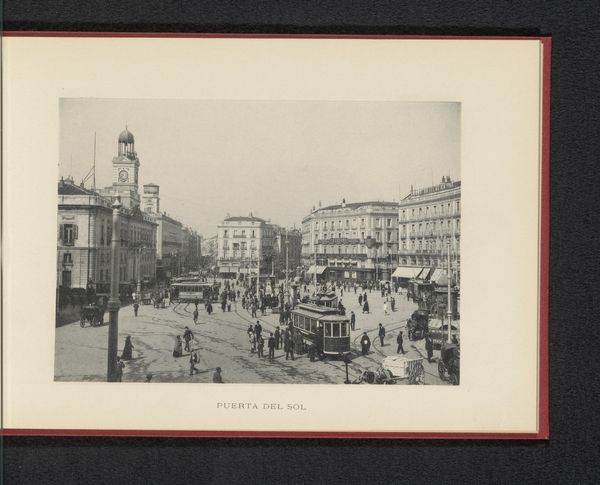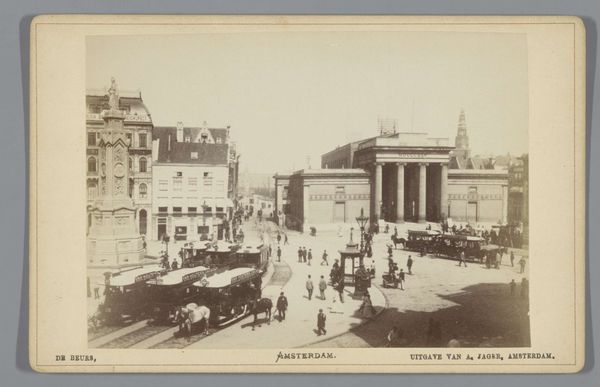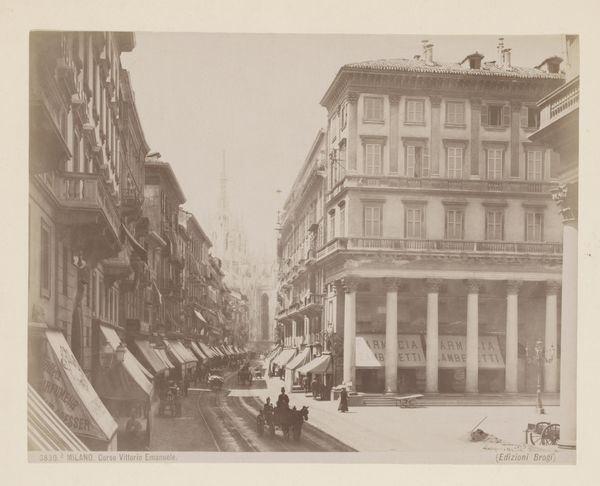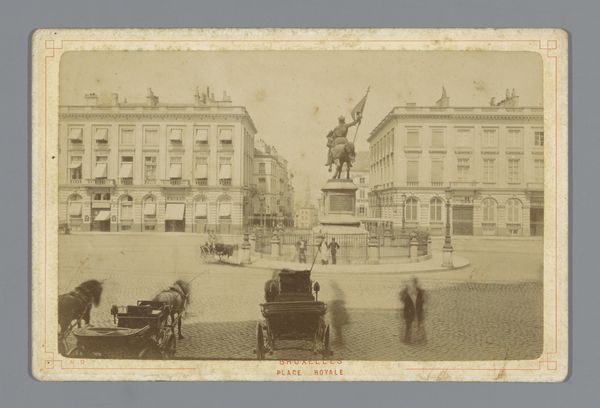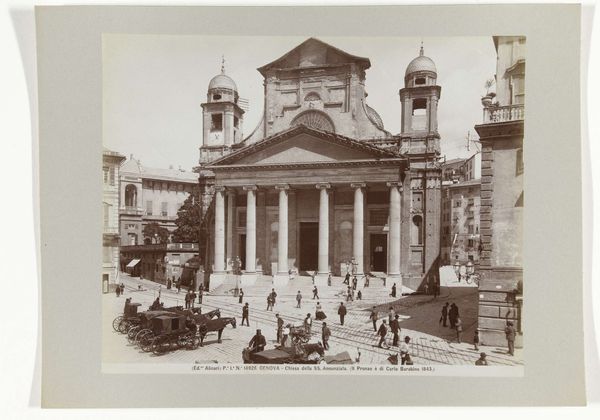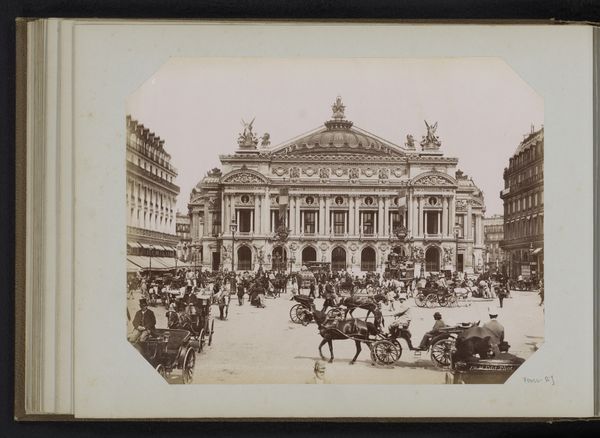
photography, albumen-print
#
16_19th-century
#
neoclassicism
#
perspective
#
photography
#
cityscape
#
genre-painting
#
albumen-print
Dimensions: height 108 mm, width 163 mm
Copyright: Rijks Museum: Open Domain
Editor: So, this albumen print, titled "Gezicht op het beursgebouw van Brussel" or "View of the Brussels Stock Exchange," was taken sometime between 1850 and 1900 by Étienne Neurdein. It's a captivating street scene, very orderly in its composition. What do you see in this piece? Curator: I am struck by the deliberate choice to portray the Bourse—the Stock Exchange—as a classical temple. Note the use of Neoclassical architectural motifs; observe the imposing columns, the triangular pediment above the columns reminiscent of Greek architecture, intended to inspire associations with ancient wisdom and enduring stability. Editor: So the artist wants to imply that finances have a noble, ancient heritage? Curator: Exactly. But consider, too, the contrast. The Bourse is teeming with modern figures, trolleys, and commerce, right? What feelings are conjured for you by juxtaposing modernity against those classical forms? Editor: It’s almost… ironic? Like trying to legitimize modern capitalism by associating it with something venerable and established. Curator: Precisely. It subtly promotes trust, suggesting the relatively new world of finance stands upon a foundation of enduring principles and timeless values. These neoclassical symbols act as anchors to an increasingly turbulent future. It attempts to create cultural memory on the spot. Editor: I hadn't thought of it that way! So the classical imagery isn't just decorative; it’s a strategic attempt to shape public perception. I've certainly learned more about seeing architecture, and photography itself, as persuasive rhetoric. Curator: Indeed, by understanding the cultural symbols at play, we glimpse into the mindset of the era and better interpret its visual messages.
Comments
No comments
Be the first to comment and join the conversation on the ultimate creative platform.
